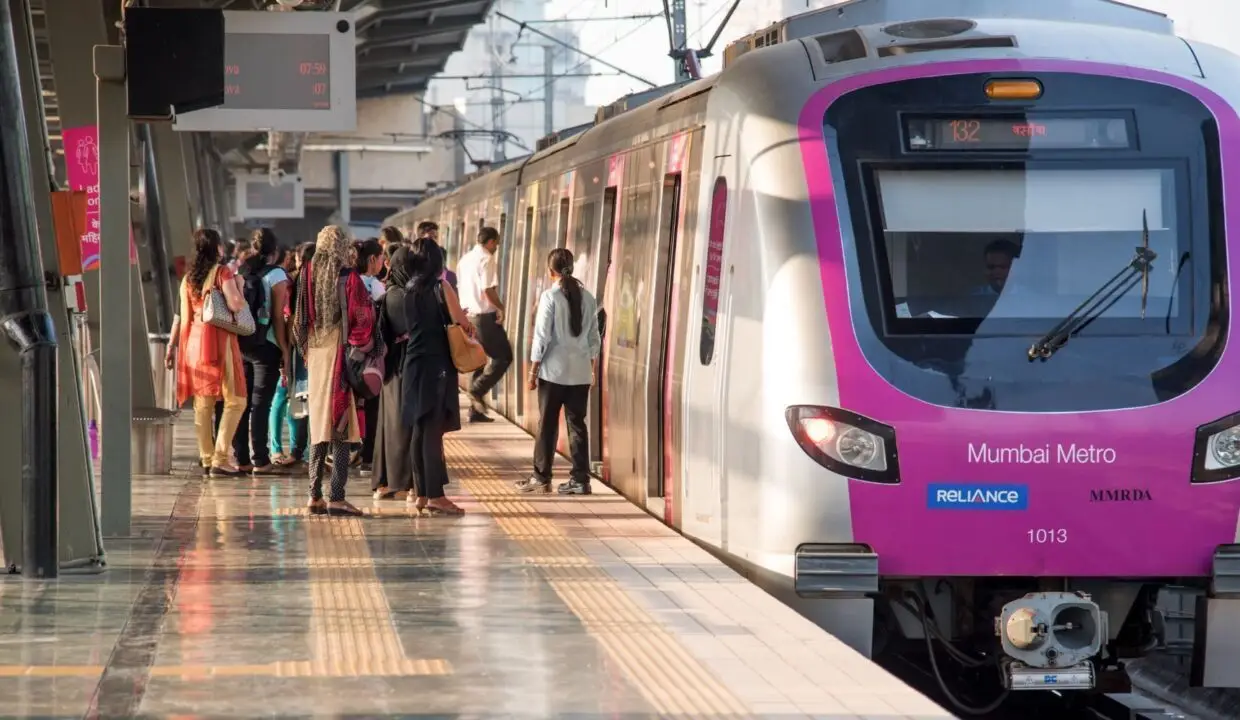
Deciphering Mumbai’s Metro System: An Adventure in Swiftness and Ease
The intensity of Mumbai, the city that never sleeps, is both intimidating and thrilling. Within this megacity, commuting can be an experience in and of itself, frequently requiring endurance and patience. The Mumbai Metro, however, has emerged as a glimmer of light amid the blaring turmoil.
A Network Becoming Formal
The Mumbai Metro line was envisioned in the late 1990s as a quickly growing network of elevated and subterranean train lines with the goal of reducing traffic and offering quicker, more comfortable travel. With three lines currently in full operation and dozens more being built, the metro is revolutionizing how Mumbai residents commute.
First Line: A Blue Breeze
Line 1 (Versova-Andheri-Ghatkopar), often called the Blue Line, is the first operating line and an elevated 11.4 km corridor that connects the eastern and western suburbs. Its svelte blue trains speed by famous sites, giving commuters a fresh view of the city.
Lines 2A and 2B: A Pair of Yellow
The Yellow Line is made up of Line 2A (Dahisar East-Dahanukarwadi) and Line 2B (Andheri West-Dahisar East), which together cover 20.7 km of the western suburbs. These lines serve the crowded regions of Dahisar, Borivali, and Andheri, offering much-needed respite from the ever-increasing traffic.
Beyond the Tracks: Comfort and Convenience
There’s more to the Mumbai Metro than just speed. Creating a smooth travel experience is the goal. The stations are air-conditioned, have elevators for accessibility, and are well-maintained and modern. Easy navigation is guaranteed by information boards and friendly personnel.
Mumbai Metro station interior
An Overview of the Future
With multiple lines currently under development and additional ones planned, the Mumbai Metro is rapidly reaching new areas. Further improving connectivity will be the planned Colaba-Bandra-SEEPZ Line (Aqua Line) and the Jogeshwari-Lokmanya Tilak Terminus Line (Green Line), which are intended to link important business districts and residential regions.
The Mumbai Metro represents advancement and hope and is more than just a means of transit. It is evidence of the city’s tenacity and determination to offer a higher standard of living to its citizens. With the network’s growth, Mumbai is expected to become more integrated and habitable for all.
Take the subway instead of the horn-blowing taxis the next time you’re in Mumbai. Take in the city more quickly and comfortably while gaining a fresh viewpoint on this architectural wonder.
P.S. For hassle-free travel, don’t forget to get a Metrocard!

